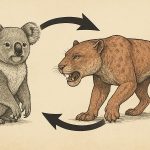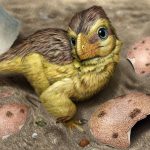Scientists reveal mosasaurs swam in rivers alongside dinosaurs
Mosasaurs are best known as fearsome marine reptiles that ruled the oceans at the end of the dinosaur era. But new research suggests these...
Scientists find over 16,000 dinosaur footprints along an ancient Bolivian Shoreline
A remarkable fossil site in Bolivia has revealed more than 16,000 dinosaur footprints, offering one of the most detailed pictures ever found of how...
Scientists discover a new giant duck-billed dinosaur hidden in museum collections for 100 years
A newly identified dinosaur species has been officially added to the family tree, thanks to fresh analysis of fossils first found more than a...
150-million-year-old footprints suggest a dinosaur walked with a limp
A remarkable set of dinosaur footprints discovered in Colorado is giving scientists new clues about how a massive, long-necked dinosaur moved more than 150...
Cleveland’s famous sea monster gets a scientific makeover after 90 years
About 360 million years ago, long before dinosaurs walked the Earth, a terrifying predator ruled the shallow seas that once covered what is now...
Scientists discover one of the densest dinosaur bone sites ever found
Deep in the rolling hills of Transylvania, scientists have uncovered one of the richest dinosaur fossil sites ever found in the region.
In an area...
How a modern koala is related to a ferocious ice age predator
Koalas may look like peaceful, eucalyptus-chewing tree-dwellers, while the marsupial lion was one of the fiercest Ice Age predators ever to roam Australia.
But scientists...
Scientists recover the world’s oldest RNA from a 40,000-year-old woolly mammoth
For the first time in history, scientists have extracted and decoded RNA molecules from the remains of an Ice Age woolly mammoth.
The breakthrough, achieved...
Dinosaur eggshells provide a new way to tell time in the fossil record
Scientists have discovered a groundbreaking way to measure time in the distant past—by dating fossilized dinosaur eggshells.
This new technique could transform how researchers determine...
Rare dinosaur discovery in West Texas expands ancient species’ known range
A surprising fossil discovery in the desert of West Texas has revealed that a dinosaur species once thought to roam only the northern parts...










